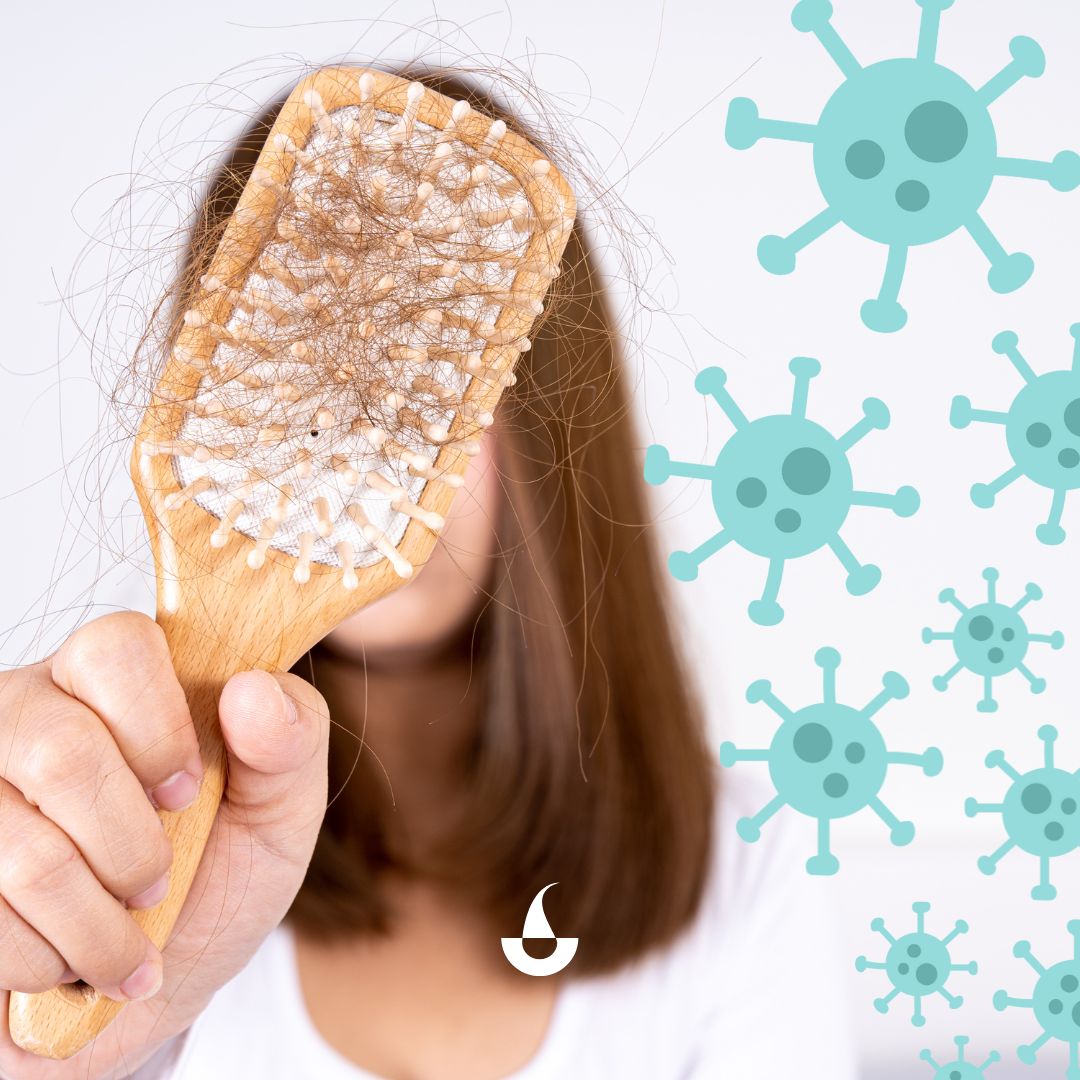COVID-19 and the Flu: Unveiling the Link to Hair Loss

The COVID-19 pandemic has brought significant attention to the varied symptoms and complications associated with the virus. One surprising consequence that has emerged is the potential connection between COVID-19 and hair loss. Similarly, the influenza virus, commonly known as the flu, has also been linked to hair loss. In this blog post, we will explore how these respiratory illnesses can potentially lead to hair loss and what underlying mechanisms might be at play.
Understanding Hair Growth and Loss:
To comprehend the impact of COVID-19 and the flu on hair loss, it is important to have a basic understanding of the hair growth cycle. Hair grows in a cyclical pattern consisting of three phases: anagen (growth phase), catagen (transition phase), and telogen (resting phase). Normally, around 80-90% of hair follicles are in the anagen phase, while the remaining 10-20% are in the telogen phase, which lasts for approximately three months before hair shedding occurs and new hair growth begins.
The Link between COVID-19 and Hair Loss:
COVID-19 affects multiple organ systems in the body due to its inflammatory nature and its impact on blood circulation. Hair follicles receive oxygen and essential nutrients through the blood supply, making them susceptible to disruptions caused by the virus. Additionally, severe illness, high fever, and emotional stress associated with COVID-19 can induce a phenomenon known as telogen effluvium, in which a larger number of hair follicles prematurely enter the telogen phase. Consequently, a few months after the illness, increased hair shedding can be observed, resulting in temporary hair loss.
Furthermore, recent research suggests that the SARS-CoV-2 virus may directly affect the hair follicles by binding to ACE2 receptors found in these structures. ACE2 receptors are the entry point for the virus into cells, and their presence on hair follicles might contribute to the development of hair loss in COVID-19 patients.
The Flu and Hair Loss:
Similar to COVID-19, influenza can also lead to hair loss, primarily due to the physical stress it places on the body. High fever, excessive sweating, and the general weakening of the immune system during the flu can trigger the telogen effluvium phenomenon mentioned earlier. While the exact mechanisms are not fully understood, it is believed that the immune system response and the resultant inflammation disrupt the hair growth cycle, leading to hair loss.
Recovery and Regrowth:
The good news is that hair loss caused by COVID-19 or the flu is typically temporary. As the body recovers from the illness and stress levels decrease, the hair growth cycle should normalize, and new hair will gradually replace the lost hair. In most cases, full regrowth can be expected within six to nine months after the initial shedding.
Coping with Hair Loss:
Experiencing hair loss, even if temporary, can be emotionally challenging. To cope with the physical and emotional effects, consider the following:
- Be patient: Recognize that regrowth takes time and focus on adopting a healthy lifestyle to support hair health.
- Eat a balanced diet: Consume nutrient-rich foods, including lean proteins, fruits, vegetables, and whole grains, to provide essential vitamins and minerals.
- Manage stress: Engage in stress-reducing activities such as meditation, yoga, or regular exercise to help promote overall well-being and potentially improve hair health.
- Avoid excessive heat styling, harsh chemical treatments, and tight hairstyles that can further stress the hair.
- Use Stimulating Hair Care: Clinically proven products such as Stim Hair Care to accelerate growth, boost hair density and support a healthy scalp health.
Conclusion:
While the primary focus of COVID-19 and flu prevention should be on reducing the transmission and severity of these illnesses, it is essential to acknowledge the potential impact on hair health. COVID-19 and the flu can lead to temporary hair loss due to factors such as systemic stress, inflammation, and disruptions in the hair growth cycle. Understanding these connections and adopting appropriate coping strategies can help individuals navigate the challenges associated with hair loss and promote healthy regrowth in due time.








